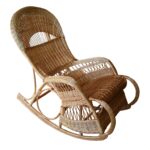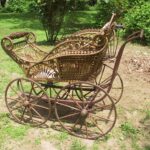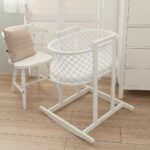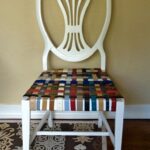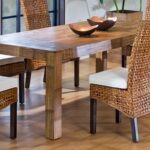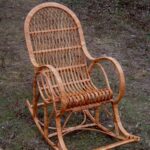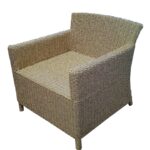Making wicker furniture with your own hands
Wicker furniture has a variety of shapes and designs. It decorates the country interior, the balcony corner for relaxation and even the living room. The very texture of weaving is conducive to relaxation and rest. Such furniture can be made with your own hands according to individual measurements.
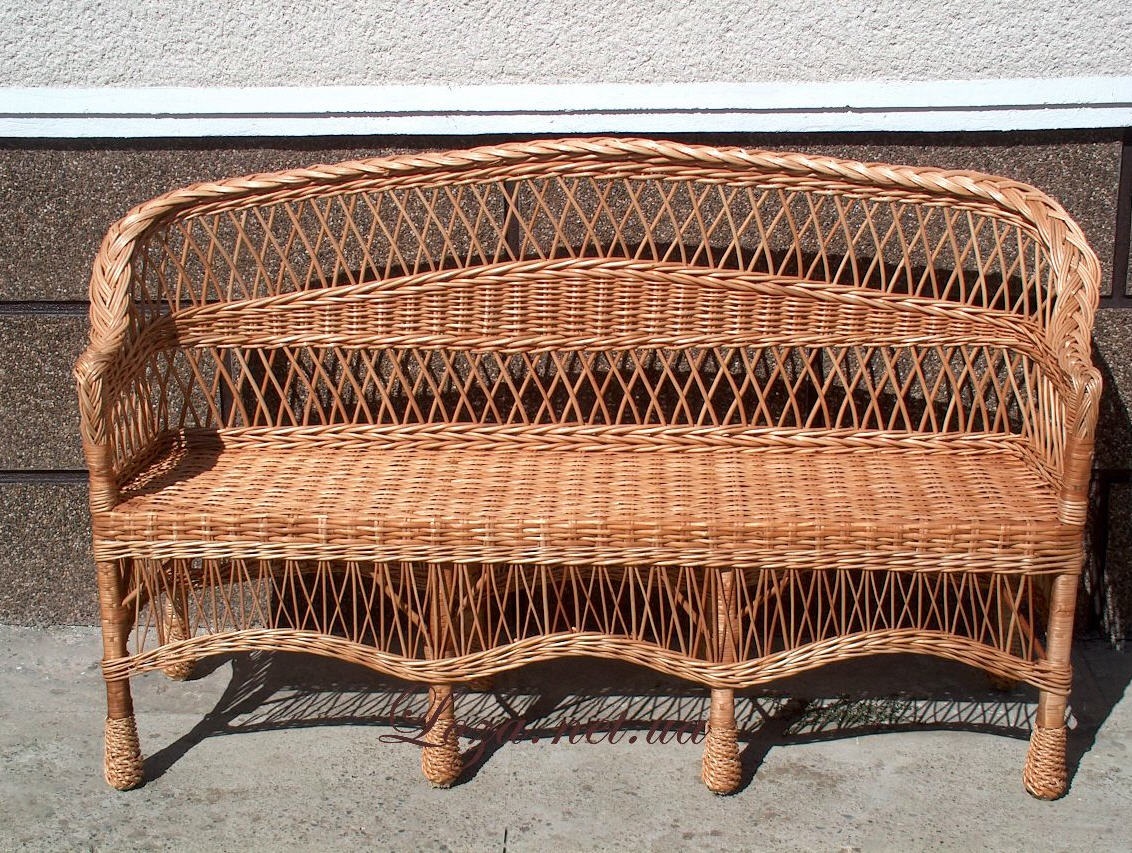
- The benefits of wicker furniture in the home
- Selection and preparation of raw materials
- Weaving methods and patterns
- Required tools
- Frame selection
- How to make a stool
- Vine chair
- How to weave a table
- The final stage is decoration
- Video: do-it-yourself wicker furniture
- Ideas for the manufacture of wicker furniture - 50 photos
The benefits of wicker furniture in the home
Do-it-yourself weaving of willow furniture has its advantages over the classic version of creating it from wood or chipboard. In addition to the classic vine, you can use other natural materials, such as rattan, reeds and even unnecessary newspapers.

- A vine armchair or sofa has a low cost compared to other materials.
- You will have a unique headset that no one else has.
- You will make furniture according to individual measurements, depending on the size of the room. You no longer need to think about how to place an oversized headset. You can weave it in the desired size and shape.
- The products are lightweight, although they can withstand the weight of an adult. This is a comfortable solution for creating a children's headset or furniture for the elderly.
- The process of making a product from a vine is not difficult if you understand the technology and watch several training videos.
- Natural material for weaving is hypoallergenic, does not have specific smells of paint or varnish. It is suitable for people prone to allergic reactions.
- The furniture is easy to clean. The only factors that the wicker does not tolerate are regular exposure to ultraviolet rays and being in the rain. But he does not like excessive dryness either. Therefore, it is not recommended to leave for a long time in bad weather or under the scorching sun. But once a month, cover the wicker with a wet towel to prevent the material from drying out and cracking.
- This headset has a very long lifespan. If handled with care, it will last for decades.

Selection and preparation of raw materials
It is necessary to prepare raw materials before the formation of visible buds on the branches. Use a sharp knife at a 40-degree angle to cut thin-cored branches. Bend each rod, test it for flexibility. If the branch does not break, but bends well, it is suitable for creating furniture from the vine with your own hands.

If weaving from willow branches is planned, they can be harvested in the fall. Make sure that there are no buds on the rods yet or that they have already outlived their age. The surface of the raw material must be flat, without knots. If you take natural material with buds, they can begin to germinate, already being in the product.
Vine
The willow vine has good flexibility and durability. This is a budget material that is suitable for beginners. The vine needs to be harvested on time, in early spring or autumn, so that its branches do not become coarse. Among the disadvantages can be called a tendency to dryness and cracking. Therefore, it is undesirable to keep vine products for a long time in the rain or scorching sun.

Rattan
Comfortable material for weaving, moisture resistant. Rattan looks impressive both in interior items and in finished furniture. It is lightweight, flexible and comfortable to use. This is an inexpensive option for beginners who decide to start making furniture from natural materials.

Newspaper tubes
A budget option for city dwellers, when the "vine" can be made by yourself literally from improvised means. You do not need to go to the forest for harvesting, because you can twist the tubes yourself. Of course, this will require a lot of newspapers, PVA glue, patience, perseverance and free time.

But you can make a luxurious furniture set from an ordinary newspaper. Any paper product is suitable as a material: cardboard, newspapers, covered notebooks, notepads and magazines.
Reed
Reed is often used to make do-it-yourself wicker furniture. This material is especially often used to create cozy armchairs. This is one of the most ancient weaving methods that has survived to this day. For work, take a part of the stem that is under water after the leaves turn yellow. This usually happens in early autumn. In addition to reeds, the stems and leaves of cattail and reed are also used for weaving.

Bamboo
Bamboo is suitable for those who have woven more than one armchair or sofa. It is a tough vine that requires careful handling and experience. But if you managed to conquer bamboo fiber, you are a true master of weaving!

Weaving methods and patterns
The techniques for making wicker chairs from vines differ from each other. Several techniques can be combined to obtain unusual results. Or stick to one weaving pattern in order to gain experience and "get your hands on".

Solid
Continuous weaving is used to obtain a uniform dense fabric. This is an option for creating kitchen utensils, furniture seats and backs, a bottom or lid, such as a countertop. There are several subspecies of solid weaving:
- a rope with two rods;
- a rope with three rods;
- layered weaving.

The essence of the technique is that vine branches are alternately layered on the frame rods. The result is a strong and elastic canvas that can be used as a basis for future furniture details.
Openwork
Openwork weaving combines elements of the previous “solid” technique. The alternation of the weaving of the material and the voids form a beautiful vine lace. Here you need to choose a high-quality vine so that it bends well, does not crack or crease. This is the only way to get a beautiful, openwork pattern.

Openwork weaving is of several types:
- several subspecies of classic weaving;
- columnar openwork;
- rhombic openwork, etc.
For edge finishing
Edging is an important stage, where all the rods are hidden in a beautiful braid. There are several ways to do this:
- braiding;
- bending of the racks inside the frame and masking between the rods;
- weaving using the "border edge" technique.
Required tools
Prepare everything you need to work in advance. Do not cut the twigs with the first scissors you come across. It is advisable that the tools are intended only for working with the vine and not used for any other purpose.
- hammer;
- jigsaw, if you need to prepare a plywood template;
- self-tapping screws for assembling furniture;
- glue for fastening parts together;
- the vine itself.

Frame selection
Wicker furniture is:
- frameless, when the strongest rods are the basis;
- frame, when a metal frame is taken as a base;
- wooden, when wooden frames are taken as the basis of furniture.
In order for the furniture to serve for a long time, it is necessary to choose a strong frame for it. This can be a wood base when it comes to garden chairs or a sofa. In this case, strong beams are suitable, which are fastened together with self-tapping screws. The finished base is woven with a vine in various types of techniques.
For oversized furniture, dining table, garden bench or outdoor swing, it is better to use a metal frame. As a rule, the base is taken from cast or forged aluminum. This makes the piece of furniture durable and not too heavy.
If the furniture is woven, for example, for a bedroom set, the weaving is covered with a thick layer of glass. It looks especially impressive and unusual.
How to make a stool
A wicker stool can be made not only from vines, but also from newspaper tubes and linen cords. The technology in any case will be the same if you have a wooden base or frame.
- Prepare the base of the stool, sand it, treat it with a stain or coloring compound.
- Select the direction of the main rods, fix them on the seat frame with self-tapping screws.
- Make sure that the same tension of the material is observed in all places.
- The braid can be passed through one base rod or through 2-3. The more the base vine remains under the leading rod, the more textured the drawing will be.
- Hide the end of the working branch under the seat.
- Since the tension on the vine will be stronger each time, it will be harder to pull the lead thread. Help yourself with your awl.
- Your stool is ready. You can additionally paint or varnish it.

Vine chair
Weaving a chair will take a little time and perseverance. The sequence of actions will be as follows:
- Soak the vine to make it pliable and supple for at least 2 hours.
- Take the finished frame of the future chair, clean it, sand it.
- Stretch the vines separately along the back and along the seat. The rods should be located strictly parallel to each other.
- Use clamps so that the vine frame does not move during operation.
- Attach new rods at right angles to those on the seat and back.
- Start weaving along the finished frame, maintaining the same tension on the rod during operation.
- Hide the outermost rod and secure it inside the base.
- Check the work for strength. The finished chair can now be painted and varnished.

How to weave a table
Weaving a coffee table requires some vines skills. First, prepare everything you need:
- a sheet of plywood corresponding to the size of the future countertop;
- ready-made wooden frame for the table and 4 beams;
- long 4 legs for legs;
- rods for attaching the legs of the future table;
- sheathing vine;
- jigsaw or other wood sawing tool.

To make a table with your own hands, you must follow the step-by-step instructions.
- Saw out the desired shape of the tabletop from the plywood sheet. It can be a square, rectangle, oval, or circle.
- Lay out the base from the vine, corresponding to the shape of the future countertop. Weave the fabric so that it completely covers the plywood blank.
- Nail the wicker cloth to the plywood with nails, put it on glue or attach with self-tapping screws. Bend the protruding ends of the rods under the countertop or weave them into the decorated edge.
- Make a subframe. To do this, assemble the table frame and legs.
- Take long rods and fasten the opposite legs alternately between themselves crosswise. Wrap the legs and auxiliary fasteners.
- Attach the tabletop to the underframe with nails or screws.
- Leave the table to dry well and cover with varnish.

The final stage is decoration
Wicker furniture practically does not need additional decoration. It is already textured to itself, especially if it is made in the openwork technique. But, if you want to add even more color, pay attention to the voluminous fabric pillows. They harmoniously fit into the aesthetics of the wicker headset, adding a sense of comfort and coziness. You can make a small cushion that only takes up the seating area.

Or you can make a large, soft cloud seat that takes up almost the entire chair or sofa. Craftsmen also skillfully weave tinted willow twigs into the vines. This is how you can make an original edging or ornament.

Do-it-yourself garden wicker furniture is an exciting experience. Once you have a grasp of the basics and a mastery of the technical background, you may want to ditch the commercially available headset entirely. It's so nice to spend evenings sitting in a hand-made chair.
Video: do-it-yourself wicker furniture

















